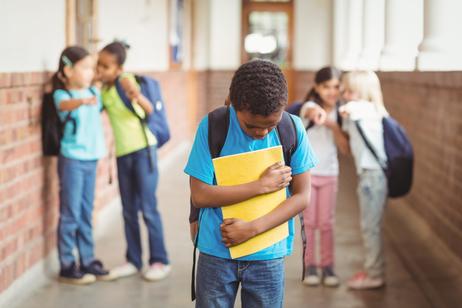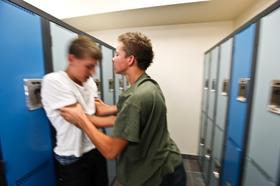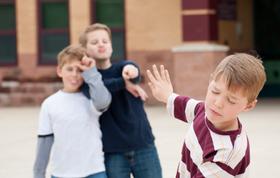Bullying, name-calling, and put-downs remain pervasive challenges in schools across the country—whether in person or online. As we move through 2025, shifting social dynamics, digital connectivity, and evolving school policies demand fresh understanding and strategies. This article offers parents current insights, best practices, and actionable steps to support children who face verbal or relational aggression at school or online.
Understanding the Scope in 2025
Prevalence and Patterns
Verbal and relational bullying—name-calling, insults, rumors, exclusion—are among the most common forms reported by students. According to the Anti-Bullying Alliance, about 40% of young people experienced bullying within the past year, with name-calling being the most frequent form (around 26%) anti-bullyingalliance.org.uk. In U.S. schools, data from the National Center for Education Statistics shows that in 2021–22, roughly 19 percent of students ages 12–18 reported being bullied at school.
The digital realm has only expanded the reach. As of 2025, about 26.5% of American adolescents report experiencing cyberbullying within the prior 30 days. Lifetime online harassment increases that share further: BroadbandSearch notes that lifetime cyberbullying victimization in the U.S. has risen to 58.2% BroadbandSearch.
Equally concerning, research linking bullying to mental health outcomes continues to grow. A large-scale study of over 95,000 students found that even mild bullying correlates with significantly elevated risk of anxiety, depression, poor sleep, PTSD symptoms, and behavioral issues—and the risk multiplies with severity arXiv.
Who Is At Risk—and Why It Matters
Certain groups attract more frequent verbal aggression: girls, LGBTQ+ youth, students with disabilities or special education needs, and those from racial or ethnic minority backgrounds. Online, younger teens and those with lower household income are more vulnerable to name-calling, rumor spreading, and harassment Bright Path Adolescent Mental Health+2Security.org+2.
Name-calling and put-downs may seem less visible or “less serious” than physical aggression, but their psychological impact often lingers. If unchecked, verbal harassment can escalate into social exclusion, reputational damage, school avoidance, or worse.
Understanding that bullying is not random or benign—but patterned and harmful—is the first step in preventing and responding to it.
A Parent’s Role: Early Signs & Initial Steps
Parents are often the first to notice changes. Here’s what to watch for, and what to do early:
Red Flags to Notice
Sudden reluctance or anxiety about going to school
Declining academic performance or loss of focus
Withdrawal from old friends, changes in social groups
Sleep disturbances, stomachaches, or unexplained headaches
Mood changes—frequent sadness, anger, or low self-esteem
Hesitance to use devices or unexplained termination of online accounts
Verbal put-downs often precede or accompany other forms of bullying. When a child mentions being mocked, teased, or insulted—even “small” comments—they are signals not to be dismissed.
Validate Before Solving
Begin by listening—and believing. A parent psychologist might advise: resist the urge to minimize (“kids tease each other”) and instead affirm your child’s feelings:
“That sounds awful. I’m so sorry you’re going through this. We’ll figure out what to do together.”
Let your child narrate what’s happening in their words. Ask gentle clarifying questions (Who? What? When? Where?) without pressure. Document the details—they will be valuable later if an intervention is needed.
Build Coping Strategies
Help your child develop assertive responses. Possible approaches include:
A calm but firm “That comment is hurtful. Please stop.”
Changing the subject or walking away
Using humor or neutral responses like “That’s interesting you see it that way”
Seeking out safe peers or allies on-site (friends, mentors)
Practice these responses together through role-play so the child feels more confident when confronted.
Working With the School: Collaboration, Not Confrontation
To stop name-calling and put-downs, coordination with teachers and school administrators is essential. Here’s how to do it effectively.
Understand the Policy Landscape
In the U.S., many states require schools to maintain anti-bullying laws or policies. State departments of education often recommend clear definitions, reporting procedures, training, and data tracking StopBullying.gov+1. For example, Iowa implemented revisions to its bullying and harassment law that take effect July 1, 2025.
Familiarize yourself with your district’s policies, your school’s code of conduct, and reporting channels (e.g. anonymous reporting, incident forms).
Set a Meeting Agenda, with Evidence
In a calm meeting with school personnel (teacher, counselor, principal), present:
The documented incidents (dates, times, quotes).
Your child’s impact (emotional, academic, social).
Specific, manageable requests—e.g. assigning a supervisor to monitor the peer group, implementing conflict mediation, checking hallway surveillance, requiring restorative conferencing.
An offer of partnership: Ask how you can assist or follow up.
Maintain professionalism. Emphasize that your concern is building a safer, more respectful atmosphere for all students—not simply punishing a child.
Request Concrete Follow-Up
A school response should include:
A time-bound investigation of the reports
A confidentiality protocol
A follow-up check (e.g. “Check in with my child weekly for 4 weeks”)
Training or reminders for staff and students about respectful language
Inclusion in or referral to social-emotional programs
If the school is reluctant or unresponsive, explore escalating to the district office or—in extreme cases—consider legal consultation. However, most effective outcomes come from cooperative engagement rather than adversarial standoff.
Coaching Resilience & Self-Confidence at Home
While the school handles structural response, ongoing work at home is equally vital.
Encourage Peer Support, Not Isolation
Help your child identify trusted friends or adults to talk to when something happens. Encourage them to be “upstanders”—students who gently intervene or distract when they see teasing or cruel remarks, rather than bystanders.
Build Self-Esteem & Social Skills
Enroll the child in workshops or clubs aligned with their interests—strength builds confidence.
Practice assertiveness and emotional regulation strategies at home.
Model respectful communication in your own interactions.
If needed, consider counseling or coaching to process emotional wounds and build coping mechanisms.
Monitor Digital Spaces
Name-calling today often begins online. Encourage openness about social media encounters. Ask questions like:
“Has anything online been hurtful lately?”
“Who are you connected with on (platform)?”
“If someone posts something about you, would you show it to me?”
Use built-in report, “block,” or “mute” features proactively. Some AI research now powers severity detection systems to flag harmful content more intelligently—but these are not foolproof. arXiv Keep communication lines open.
Real-World Examples & Expert Insight
Case Study: The Power of Early Intervention
At a midsize private school in the Midwest, a middle-school student named Ava reported being mocked by a peer group over her accent. Her parents documented each incident and met with the school. The school convened a restorative circle (peer discussion with counselor), established daily check-ins for Ava, and rotated student leadership in that peer group. Within a month, the verbal mistreatment had sharply declined—and the perpetrating students expressed increased empathy through facilitated dialogue.
Expert Perspective
Dr. Maria Chen, educational psychologist and consultant, notes:
“Name-calling may feel small to outsiders, but to the target it chips away at identity, belonging, and self-esteem. Effective response must couple emotional support with systems-level action. The message must be: You are worthy, and we won’t tolerate this.”
When to Seek Outside Help
If your child experiences:
Escalation to threats or persistent verbal abuse
Disruption of daily functioning (e.g. refusing school, self-harm ideation)
No sustained school response
…then consider external resources: therapy or child advocacy, mediation support, or referral to local anti-bullying or legal organizations. You may also request a sectional review by a district-level office or educational ombudsperson.
Summary & Long-Term Mindset
Name-calling and put-downs often form the undercurrent of school bullying—but they are neither harmless nor inevitable. In 2025, the combination of evolving state policies, digital connectivity, and heightened awareness gives parents and schools more tools than ever.
Successful parent intervention rests on four pillars:
Awareness & validation—listen and believe early
Collaboration with school—document, meet, request structured follow-up
Home resilience-building—affirm self-worth, strategize responses, monitor digital space
Persistence—bullying is rarely resolved in one meeting
For families considering boarding or private schools, review platforms like BoardingSchoolReview offer insight into schools’ culture, discipline, and student support systems—factors that may influence how a school responds to bullying.
By attending to name-calling and put-downs with the seriousness they deserve, parents can help build safer environments where respect, dignity, and positive peer relationships flourish.















